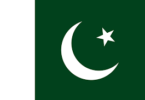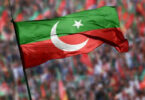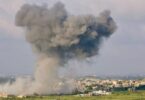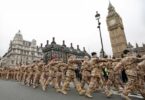Esref Yalinkilicli
Russia is struggling to chart a path towards reconciling the Bolshevik Revolution while not glorifying it as a means of political change. November 7 marks the centenary of the Bolshevik Revolution of 1917. It changed the course of Russian history and politics with its global ramifications still being felt today.
To understand post-Soviet Russia, it is important to understand the revolutionary context that gave birth to modern Russia. Needless to say, the social, cultural and institutional genesis of present-day Russia lies in the Bolshevik Revolution, when the Soviet Union emerged from the ashes of the Tsarist empire in the wake of World War I. The Bolshevik Revolution left Tsarist Russia in turmoil. The events and developments prior to, and after, the October Revolution led to the collapse of more than a thousand years of dynastic rule.
Hundred years on: Russia reckons with the Bolshevik Revolution: When the Soviet Union abruptly ended in December 1991, the term Bolshevik—used positively for much of the 20th century within the USSR—took on negative connotations in the post-Soviet period. Thus, Russia’s rupture from the revolutionary spirit of its Soviet past began in the 1990s with the Russian leadership acknowledging the imperial era by changing city names. Towns and streets reverted to their original names or were bestowed with new ones. Leningrad became Saint Petersburg and Sverdlovsk to Yekaterinburg.
Negative attitudes toward Russia’s revolutionary past are not limited to just renaming cities, of course. The founding figures of the Soviet Union, among them, Vladimir Ilyich Lenin and Joseph Stalin, have come under increased scrutiny. The focal point of these debates has centered on the corpse of Lenin laying in state in the Kremlin, and Stalin’s purges and crimes, known as the “great terror”, or Russia’s “reign of terror” during the antebellum era.
The public discussion on what to do with Lenin’s dead body, which was mummified in 1924 after his death, has created tensions in Russian politics ever since Russia’s first post-Soviet leader Boris Yeltsin ordered the demolition of the Lenin mausoleum in Moscow’s Red Square.
A recent public survey conducted by Russia’s independent polling organisation, Levada Center, has shown that at least 58 percent of Russians Lenin’s embalmed body should be properly buried either in Moscow or in St. Petersburg.
As for Stalin, Russians have chosen him as the most outstanding historical figure, followed by Vladimir Putin and Stalin’s predecessor Lenin. These results create a complex, if not contradictory understanding of Russia’s revolutionary upheavals. In an era where Russians feel they are under siege by the West, nostalgia for great leaders who can secure the homeland have become an essential component for a people and a political class increasingly insecure of their place in the world.
The making of a silent conservative revolution under Putin: Many Russians are divided in their approach towards the Bolshevik Revolution while at the same time displaying a nostalgia for the past, given Russia’s place in the world today. Putin’s leadership, while drawing on conservative trends within Russian society, such as its close relations with the Orthodox Church, also bemoans the fall of the Soviet Union.
Putin has also played on the desire of the Russian people to see great and strong leaders, hence the admiration for Stalin. Therefore, Putin’s success in the repositioning of power towards the centre, modernising the army, and reforming the economy after the Soviet collapse must be considered within that context. His resulting popularity must be set against this historical background.
Putin has used his popularity, which surpassed 80% after Russia’s occupation of Crimea, for the canonisation of the imperial past through a new official historiography, also referred to as the “thousand-year history.”
By undertaking to create a new Russian identity—ble-nding nationalism, conservatism and religion—Putin is ensuring the Bolshevik Revolution is reappraised as part of a longer historical narrative. One in which is Russia is part of a thousand years of history, rather than simply a product of the last century. By placing Russia in the midst of a gradual political evolution, the hope is that it stymies the need for revolutionary politics. Thereby revolution becomes an aberration. In order to establish a new “VelikoRussia” (Great Russia) after the Soviet era, Putin appealed to the reinvention of tradition, which dates back to the early Kiev Rus and Muscovy medieval eras and to the Romanov dynasty in modern times. In other words, the long pre-Soviet Russian tradition enabled post-Soviet Russia to use its past and resuscitate a diminutive Russia.
The reinstatement of the Russian Orthodox Church in Russian society was a step forward in this process since the Church became a symbol of social cohesion and national unity for the Russian Federation. Moreover, Putin and the Kremlin’s ruling elite regard the lack of morality and faith as a failure of the Soviet regime and its leadership.
First and foremost Lenin, whom Putin has accused of planting an atomic bomb under Russia, is used as an example of leadership lacking in morality and Christian ethics.
Putin considers revolutionary political changes to be harmful. The Soviet legacy is only useful in so far as it is a unifying social force and reignites the national spirit in present-day Russia. Interestingly, Putin has so far favoured the celebration of Soviet Union’s intervention in World War II, instead of the early revolutionary era.
In this vein, the Putin administration has enthusiastically commemorated Victory Day on May 9 each year with flamboyant military parades commemorating the Soviet victory over Nazi Germany in 1945. That celebration provides a starker “good versus bad” narrative as opposed to the complex ideas posed by the October Revolution.
Russia’s gradual institutional change: Russia’s transition from communism to the crony capitalism of the 1990s, under Western supervision, has long been viewed as a source of national humiliation. Since then, Putin has embarked on a process in which the state guides the economy, a sort of “Russian economic model.” This approach to the economy and more widely to politics has yielded a new form of governance which the West finds threatening.
No doubt, this model has suited Putin’s presidency where the formal and informal institutional culture was directly inherited from the legacy of the 100-year-old Bolshevik Revolution. In this sense the revolution which inspired the Russian state all throughout the Soviet Union in the 20th century, is still alive in Russia.
But this time Putin and the new post-Soviet political elites prefer a gradual institutional change within a peaceful conservative national evolution – not revolution.






